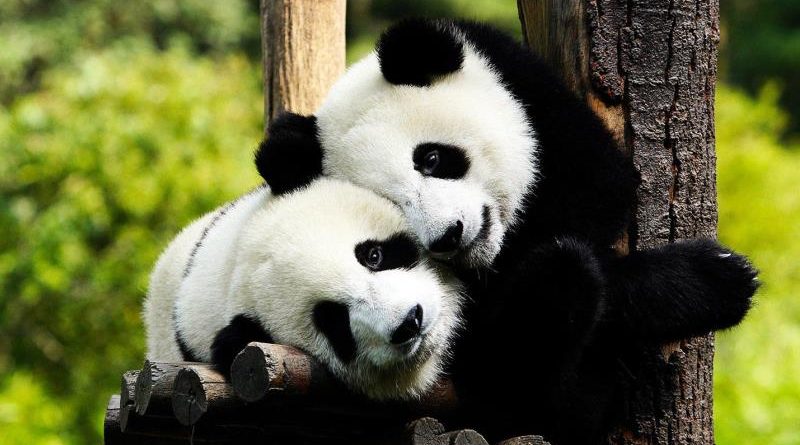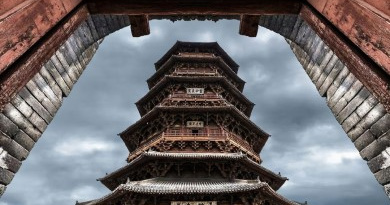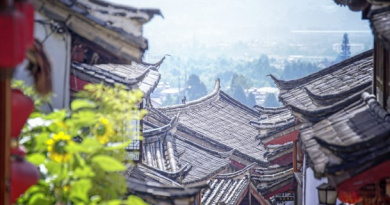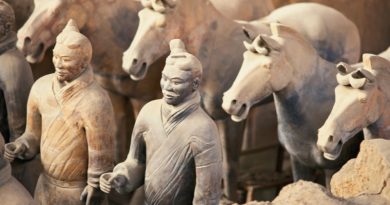Chengdu: Gateway to the Wild West
Gateway to West China, Chengdu is the regional commerce, financial and transportation hub and capital of Sichuan Province. The archaeological excavation of Sanxingdui is a solid proof of human activities at least four thousand years ago. The city has been an important military town and was the capital of the ancient Shu Kingdom in 311BC, until it was defeated by Emperor Qin, the first emperor of the Middle Kingdom. The Shu civilization and the Yellow River civilization form the foundation of the Chinese civilization.
Chengdu and its nearby area is an exceptional destination full of history and natural beauty. It nourished the birth of the Shu civilization, became the battlefield of the Three Kingdoms until it was united by Emperor Qin, saw the set up of the great Han Dynasty and took in Buddhism from India via the Silk Road from where the religion was spread all over China. The natural landforms cultivate fairytale-like landscape at Jiuzhaigou and Emei Mountain, and give birth to lovely animals like the giant pandas.
Chengdu and the Chengdu Plain where the city is situated, is often called the ‘Land of Ambudance’, thanks to the Dujiangyan Irrigation System more than 2,200 years ago, diverting water irrigable water to the farmlands and reducing flooding without a dam.
Chengdu is easily connected from Hong Kong and many other cities in China. There are also direct connections to Amsterdam, Singapore and Seoul.
| Day 1 | Arrival Arrive Chengdu. Meet and greet at the airport and transfer to hotel. |
| Day 2 | The Story of Chengdu: History, Giant Pandas and Cuisine Meet the pandas at the Giant Panda Breeding Research Centre. You’ll see their nursery centres, the playful baby pandas and habitat for the adult pandas. After lunch, visit the Martial Marquis Memorial Temple to learn about the legendary stories of the Three Kingdoms, and the ingenious strategies and philosopher Zhu Geliang who made use of various tactics to ambush its enemies in a series of warfare. Make a stop at the spice market to find out how the local people make use of the spice to make a typical Sichuanese dish before transfer to Jinli Ancient Street – a busy narrow lane with street stores selling all kinds of local snacks – and find out the role of spices in the culinary culture of Sichuan. Enjoy the famous Sichuan show including the popular ‘face change’ performance before return to the hotel. |
| Day 3 | A Great Day Out to Mount Qingcheng Tour to the Mount Qingcheng and Dujiangyan, a UNESCO world heritage site. Mount Qingcheng is a Taoist mountain and the road leading up to the top offers some of the most fascinating natural landscape in China. The Dujiangyan Irrigation project was built more than 2,000 years ago, ingeniously diverting water from Min River to Chengdu Basin and at the same time stopping destructive flooding. The project involved digging canals, opening up navigation route and flattening the hilly landscape, a representation of advances in science and technology in ancient China. Return to Chengdu and make a stop at Kuaizhai Xiangzi, literally meaning Wide and Narrow alleys in English, an ancient settlement now turned into a trendy dining and entertainment area. |
| Day 4 | Departure/Optional Tours Pick up from hotel and transfer to the airport, or continue your exploration in Chengdu and its province Sichuan with the optional tours. |
Optional Tour to Leshan and Mount Emei (UNESCO World Heritage site) and Jiayang
(Duration: 3 days/2 nights from Chengdu)
| Day 1 | The History Transfer to Huanglixi Ancient Town. With a history of more than 1,700 years and the birthplace of the Han Dynasty, it is a travel back to time. You’ll learn stories about the legendary Han heroes who built their Han Kingdom from this ancient town. You’ll see old temples and piers, ancient architecture and streets, as well as hundred years old trees – best photo opportunities to capture the ancient ambience of China. Continue the tour to Emei Mountain by coach. Overnight at Emei Mountain. |
| Day 2 | The Landscape Climb up the Emei Mountain in the morning. Visit the Golden Pagoda – the second highest peak of Emei Mountain at an altitude of 3,077 meters. Tour to the Wannian Temple, Baoguo Temple, Fuhu Temple. You’ll also see the diverse vegetation, and some of the trees are more than 1,000 years old. Transfer to Leshan in the afternoon and enjoy a close look of the Giant Buddha at Leshan before taking a boat cruise to capture the best photo shots for the Buddha. Overnight at Leshan. |
| Day 3 | The Scenery Leave for Jiayang in the morning for a ride on antique steam engine train – one of the last remaining steam engine train in operation in China. The train pass through country fields and the scenery is exquisitely charming with flowers blossoms and the air filled with the sweet fragrant smell of spring. Return to Chengdu after the tour. |
Mount Emei and Leshan is named as a UNESCO World Heritage site because of its cultural significance. Buddhism brought to China via the Silk Road, and the first Buddhist temple was built here at around 1st century, and from here the religion was spread throughout China. The Giant Buddha, at a height of 71 metre, is carved out of a hillside and the largest Buddha in the world. Jiayang is a charming little town where a ride on the ancient steam-engine railway to the countryside is extremely pleasant and refreshing.
Optional Tour to Huanglong and Jiuzhaigou Valley (UNESCO World Heritage sites)
(Duration: 3 days/2 nights from Chengdu)
| Day 1 | Landscape on high altitude: Huanglong Fly from Chengdu to Jiuzhaigou Huanglong Airport. Tour to the Huanglong Valley. The Valley is situated on an altitude of 3,400 meters. Surrounded by snow capped mountains and glaciers, there are spectacular waterfalls and ponds, and the landscape is covered by colourful high altitude fauna and virgin forest. Visit the Huanglong Ancient Temple with a rich collection of Buddhist relics over the centuries. Overnight in Jiuzhaigou. |
| Day 2 | Colours of Jiuzaigou Valley Full day at Jiuzhaigou National Park to offer ample photo opportunities. You’ll see waterfalls and ponds, streams and valleys creating an exquisite display of colour and texture. |
| Day 3 | Departure Visit at Jiuzaigou in the morning until transfer to airport to catch flight back to Chengdu. |
Jiuzhaigou is known as a fairyland with high altitude karst landform, spectacular waterfalls, lakes and a diverse forest ecosystem, giving the valley, its waters and foliage a colourful appearance and a rich texture. The landscape will be clothed by different colour tones depending on seasons of visit: spring green in spring, emerald lush summer with clear blue waters, golden autumn and silver white winter. The Jiuzhaigou site offers such a diverse landscape and rich colour that we will visit the sites for two full days to offer ample photo opportunities.
The valley is worth visiting all seasons, though autumn time is the most busiest when a surcharge will apply.
Home of the Giant Pandas
The symbol of the World Wildlife Fund, the giant panda is one of the rarest animals in the world, estimating to be around 1,500 and 80% of them are in Sichuan province. The Sichuan Wolong Giant Panda Nature Reserve is 130 km outside Chengdu, but there is the Giant Panda Breeding Research Centre at the city centre where you’ll see efforts by scientists to breed and conserve these adorable animals.
Culinary Culture
Sichuanese food is hot and spicy. Its flavour is a result of liberal use of spices: garlic, chilli peppers, star anise, ginger and other spicy herbs and plants. Sichuanese chefs create a great variety of flavors base on five elements : sweet, sour, bitter, spicy and salty. Dishes are presented in hot, red, sizzling plate of delicious items. Today, Sichuanese restaurants are found all over China, and is a popular local cuisine. No wonder Chengdu was invited to join the Creative Cities Network and become the second UNESCO City of Gastronomy.
Laid Back Life Style
Local people know very much how to enjoy life. Spending an afternoon at a tea house, watching Sichuanese opera, playing mahjong are the favourite past time. Chengdu boasts the largest number of teahouses in the world, and many of these tea houses are open air. Unlike most modern cities such as Shanghai or Hong Kong, the people here are more laid back, and know best how to spend a day doing nothing.
Local Arts and Performing Arts
Sichuanese opera is a combination of stunts such as face-changing (changing of face masks in seconds), fire-spitting. Face changing is such an incredible performance that it becomes a must-see performing art for visitors to Chengdu. Shu embroideries are also considered one of the best four schools of embroideries in China. Other local arts and crafts include tea sets of porcelain body woven by bamboo so that they will not slip out of your hands.
Sichuan
Sichuan Province, which capital is Chengdu, is very rich in tourism resources. It borders Tibet to the west and Qinghai to the northwest, and there are a number of Tibetan villages in the western part of Sichuan. The city of Chongqing is east of Sichuan, and there are high speed train connecting Chongqing and Chengdu in 2 hours. Gansu, where the Silk Road route passes through, is located north of Sichuan and Shaanxi (where Xian, the starting point of the Silk Road, is the capital) is at its northeast. To the south is Yunnan and Guizhou.
UNESCO World Heritage Sites
There are many UNESCO World Heritage sites in Sichuan:
•Huanglong Scenic and Historical Interest Area.
•Jiuzhaigou Valley Scenic and Historic Interest Area.
•Mount Emei Sceinic Area, including Leshan Giant Buddha Scenic Area.
•Mount Qingcheng and the Dujiangyan Irrigation System.
•Sichuan Giant Panda Sanctuaries – Wolong, Mt Siguniang and Jiajin Mountains.
Religion
Taoism and Buddhism thrives in Sichuan. Mount Qingcheng, some 70km from Chengdu, is one of the birth places of Taoism, an indigenous religion of China. There are caves and shrines which are considered ‘holy sites’ by the Taoists.
Mount Emei, however is one of the holy mountains for the Buddhists in China. Buddhism arrives Mount Emei some 2,000 years ago and left behind some 30 temples and monasteries.
From Chengdu to…
Chengdu is the gateway to China West. There are high speed trains connecting the city to Chongqing, where you’ll aboard the Yangtze River cruise. There are also daily flights to Lhasa , Tibet as well as flights to Kashgar, Xinjiang. Let’s begin your momentous journey to the wild west of China.




